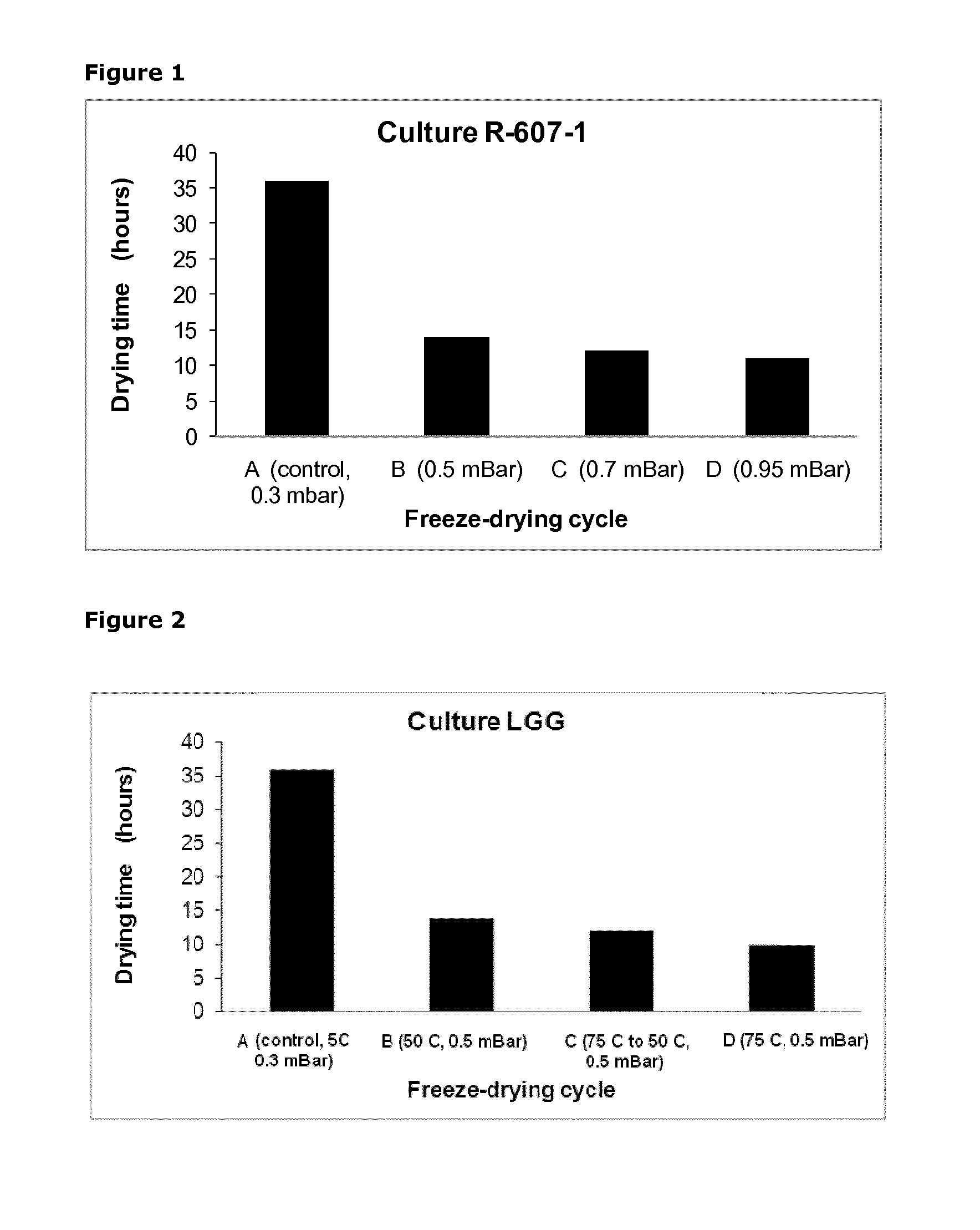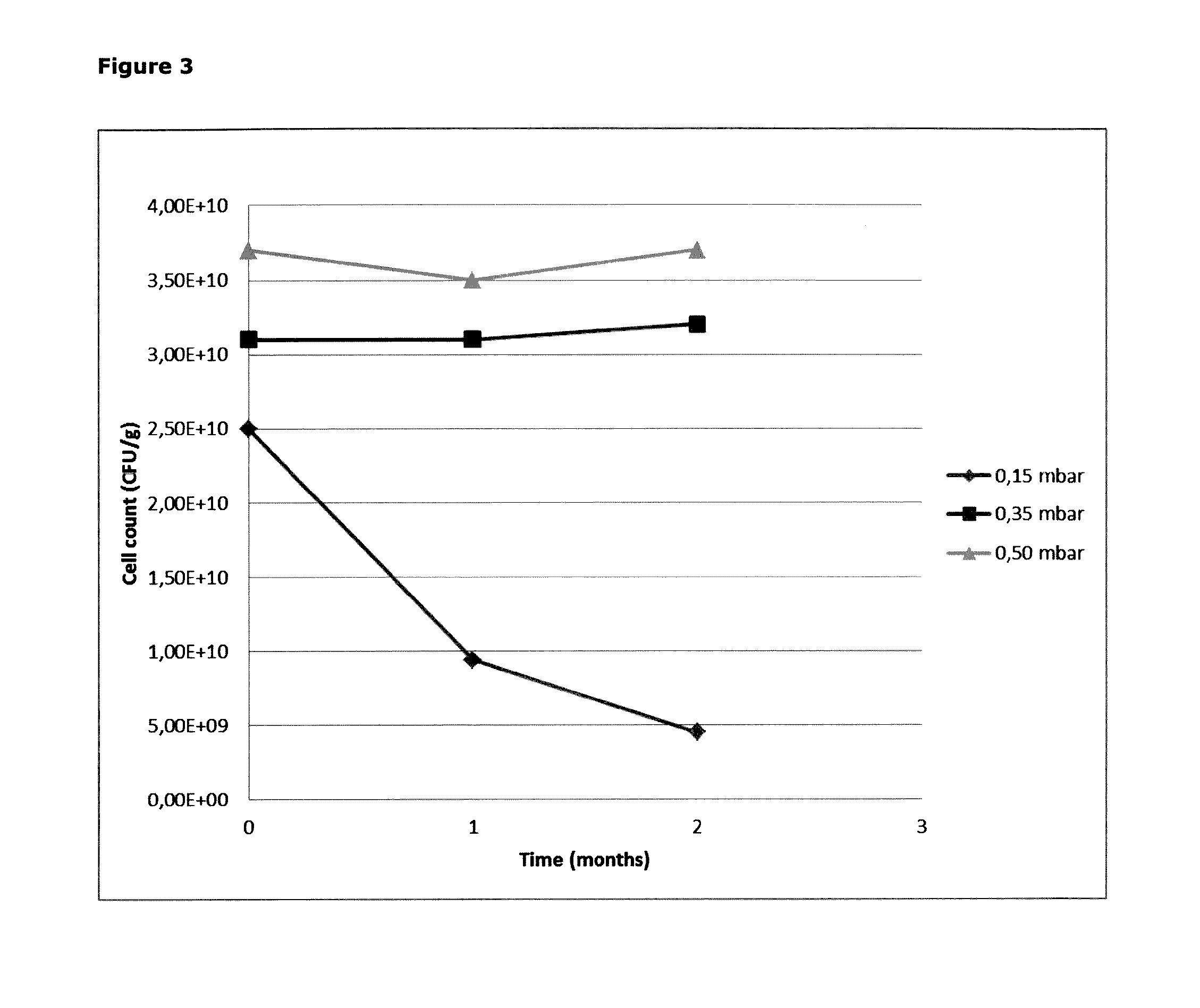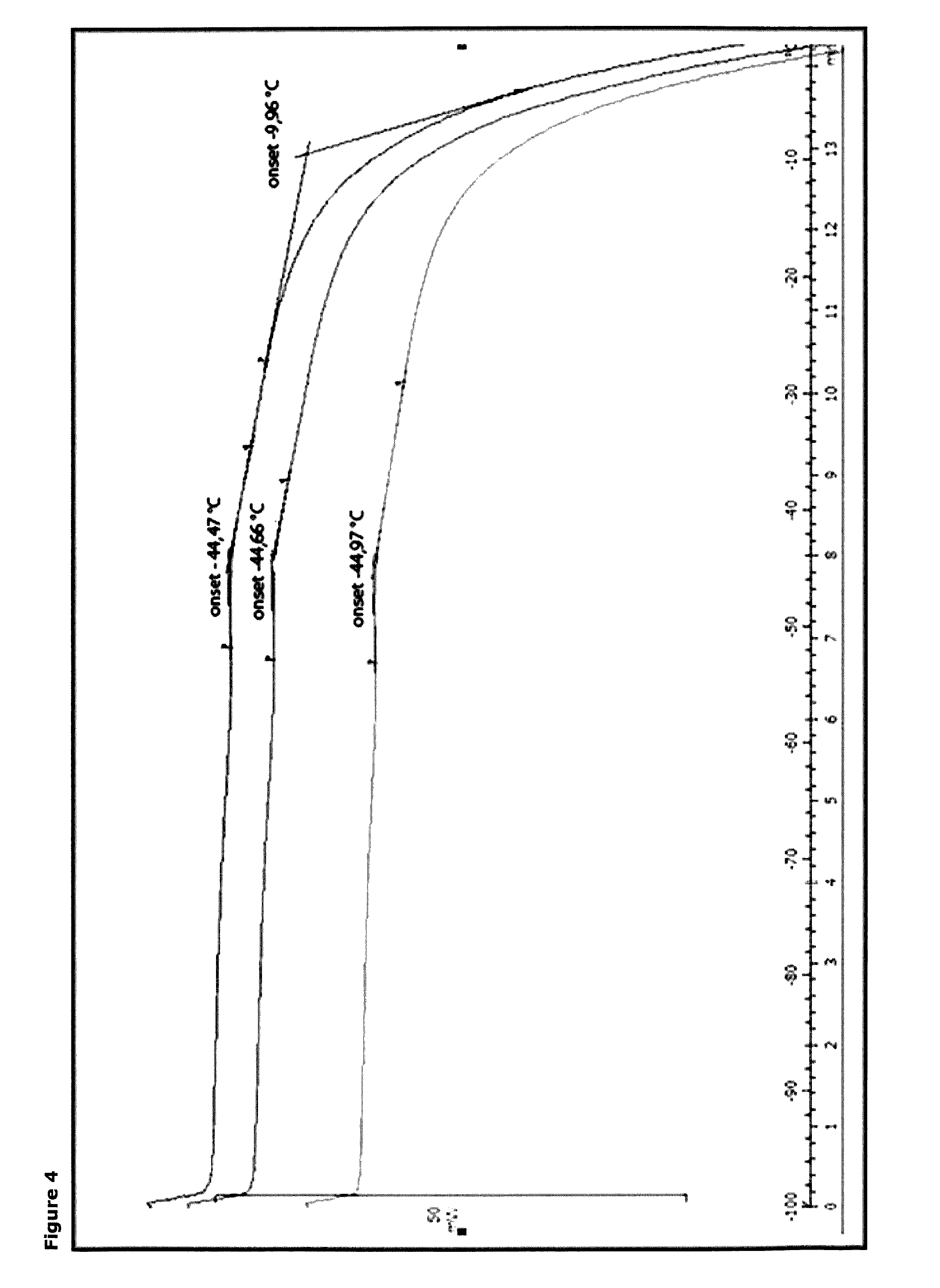Method for optimizing a process for freeze drying a bacteria-containing concentrate
a technology of concentrate and freeze drying process, which is applied in the field of optimizing the process of freeze drying a bacteria-containing concentrate, can solve the problems of prolonged drying cycle and high cost of industrial freeze drying process, and achieve the effect of optimizing the storage stability of freeze drying bacteria-containing products and improving the storage stability of bacteria-containing products
- Summary
- Abstract
- Description
- Claims
- Application Information
AI Technical Summary
Benefits of technology
Problems solved by technology
Method used
Image
Examples
example 1
Lactococcus Lactis, R-607-1: Comparison of Product Quality when Freeze-Dried Under Mild and Aggressive Conditions. Effect of High Pressure (0.5-0.95 mBar)
[0085]Lactococcus lactis, R-607-1 ® with deposit accession number DSM21404 was cultivated in 700 liters MRS. The bacteria in the fermentation broth were concentrated by centrifugation using a centrifuge CSA-6 Westfalia. After centrifugation, the bacterial concentrate was mixed with cryoprotective solution (300 g to 1000 g cell concentrate). Afterwards the bacterial suspension was frozen with liquid nitrogen in the form of pellets (i.e. PFD). The cryoprotective solution consisted of skim milk (14%), monosodium glutamate (6%) and water (80%). The frozen pellets of the bacterial suspension are called pre-freeze-dried product (i.e. PFD). Pre-freeze-dried product (PFD) in the form of frozen pellets (i.e. PFD) with a size of 1 to 5 mm in diameter was used for the freeze-drying trials carried out in the pilot scale described below. The PF...
example 2
Lactobacillus Rhamnosus LGG®: Comparison of Product Quality when Freeze-Dried Under Mild and Aggressive Conditions. Effect of High Temperature (50-75° C.)
[0113]Lactobacillus rhamnosus (ATCC53103) was cultivated in 700 liters MRS. The bacteria in the fermentation broth were concentrated by centrifugation using a centrifuge CSA-6 Westfalia. After centrifugation, the bacterial concentrate was mixed with cryoprotective solution (300 g to 1000 g cell concentrate). Afterwards, bacterial suspension was frozen with liquid nitrogen in the form of pellets (i.e. PFD). The cryoprotective solution consisted of skim milk (14%), monosodium glutamate (6%) and water (80%). The frozen pellets of the bacterial suspension are called pre-freeze-dried product (i.e. PFD). Pre-freeze dried product (PFD) in the form of frozen pellets (i.e. PFD) with sizes of 1 to 5 mm in diameter were used. The PFD was kept at −50° C. until being freeze-dried. The freeze-drying was carried out as described in Example 1 with...
example 3
Investigation of Lactobacillus rhamnosus LGG®
[0130]It was surprisingly experienced that the storage stability of freeze dried (FD) Lactobacillus rhamnosus LGG® (ATCC53103) is dependent on the pressure used in the freeze drying profile. The storage stability of unwashed LGG® dried at different pressures (0.15 mbar, 0.35 mbar and 0.5 mbar) when kept in closed bags for up to 2 months at 25° C. and 60% RH is shown in FIG. 2. The temperature profile of the drying was identical for the three samples (65° C. gradually lowered to 32° C.). From FIG. 3 it appears that the storage stability of the Lactobacillus rhamnosus LGG® freeze dried at 0.15 mbar is much lower than the storage stability of the Lactobacillus rhamnosus LGG® freeze dried at 0.35 mbar or 0.5 mbar.
[0131]In order to get an explanation on the differences in storage stability the melting points of the pre-freeze dried product (PFD) was measured (FIG. 4), and the physical appearance of the freeze dried (FD) products were investiga...
PUM
| Property | Measurement | Unit |
|---|---|---|
| melting point | aaaaa | aaaaa |
| temperature | aaaaa | aaaaa |
| temperature | aaaaa | aaaaa |
Abstract
Description
Claims
Application Information
 Login to View More
Login to View More - R&D
- Intellectual Property
- Life Sciences
- Materials
- Tech Scout
- Unparalleled Data Quality
- Higher Quality Content
- 60% Fewer Hallucinations
Browse by: Latest US Patents, China's latest patents, Technical Efficacy Thesaurus, Application Domain, Technology Topic, Popular Technical Reports.
© 2025 PatSnap. All rights reserved.Legal|Privacy policy|Modern Slavery Act Transparency Statement|Sitemap|About US| Contact US: help@patsnap.com



